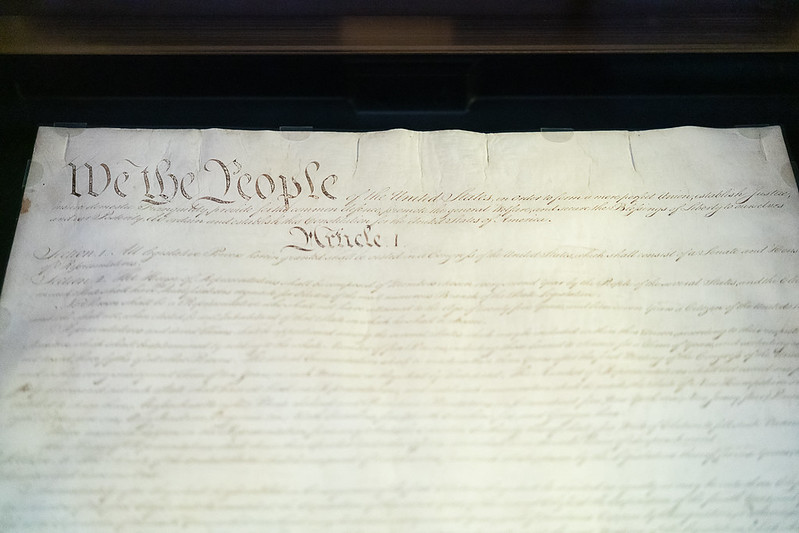 In addition to textualism and originalism, there is another theory of constitutional interpretation: living constitutionalism. Living constitutionalism, sometimes called pragmatism, is often described as a more progressive method of constitutional interpretation. The primary aim of this method is to ensure that rulings always favor the ‘moral choice’ and do what is best for society, regardless of what the actual document itself says. In this method, adherents will typically look for vague provisions within the Constitution that can be used as a “stepping-off” point to infer further protections or state powers.
In addition to textualism and originalism, there is another theory of constitutional interpretation: living constitutionalism. Living constitutionalism, sometimes called pragmatism, is often described as a more progressive method of constitutional interpretation. The primary aim of this method is to ensure that rulings always favor the ‘moral choice’ and do what is best for society, regardless of what the actual document itself says. In this method, adherents will typically look for vague provisions within the Constitution that can be used as a “stepping-off” point to infer further protections or state powers. Most living constitutionalists will tell you that any 200-plus-year-old rulebook is going to be in constant need of updates to match current circumstances and keep up with the times. They say that in 1787, at the time the Constitution was ratified, not even the Founders could have anticipated the world we live in today, and therefore the laws they put into place must evolve with the times. Furthermore, living constitutionalists might argue that judges are failing their country by refusing to interpret the law in such a way as to account for real-world consequences. The Constitution carries so much weight, it is argued, that to not use its power for the greatest perceivable good is a dereliction of one’s duty.
Criticism of living constitutionalism will often assert that the supporters of the method are missing the point of laws, for “a law, in order to function as law, has to have a fixed or settled meaning until it is formally amended or discarded.” By concerning oneself with the practical consequences of a ruling, politics is inserted into what ought to be an apolitical process.[1]
The contended need for laws and provisions to have fixed definitions is far from being where the end of the complaints, however. Living constitutionalism openly asserts that contemporary judges and justices are more well suited for determining the laws we live by than the Founders, or even the document itself. This, in turn, must mean they support a limited but very real version of arbitrary rule, or the idea that there is no such thing as unconstitutional law.
In this case, however, arbitrary rule is coming not from the legislature, but the judiciary. These judges and justices refuse to hold themselves accountable to any actual state entity, such as the Constitution, instead opting to be held accountable to the murky waters of their own understanding of social morality. In essence, this sort of arbitrary interpretation nullifies the entire Constitution, America’s greatest safeguard against authoritarianism and illiberalism.
Critics also often note that some of the most widely abhorred Supreme Court rulings used living constitution theory as their basis. For example, approximately ten weeks after Pearl Harbor, President Roosevelt issued Executive Order 9066, ordering that those with Japanese ancestry who lived in “military areas and surrounding communities” should be sent to detention camps. Roughly two out of every three individuals directly affected were United States citizens. In Korematsu v. United States, the case challenging internment, it was decided that “the evacuation order… was valid, and it was not necessary to address the constitutional racial discrimination issues in this case.”
Why? Well, since there existed the potential of espionage, order 9066 was held as being a necessary measure, and the court believed it had a duty to do what was in the best interest of the American public. There is a very strong argument to be made that the threat of espionage does not supersede the 14th Amendment’s equal protection clause, but the Supreme Court ignored all that, instead opting to prioritize their moral convictions over the Constitution.[2]
[1] “Original Meaning and Constitutional Interpretation.” Congress.Gov
[2] “Facts and Case Summary – Korematsu v. U.S.” United States Courts
